Since the electronics boom of the ’80s and ’90s, engineers have been using computers to push the envelope of vehicle performance. From advanced all-wheel drive systems and rear-wheel steering to torque vectoring and adaptive suspension, these technologies have made cars faster, safer and more comfortable to drive.
But while these systems are certainly effective, their complexity and cost have often relegated them to the most exalted of sports cars, or as pricey options. Not only that, they tend to produce a driving experience that feels somewhat artificial, synthesised – and although still fun all the same, they do put yet another adulterating barrier between man and machine.
So who else but Mazda – the original jinba ittai company – that would seek to use technology not just as a tool to make cars faster and easier to drive, but somehow also provide a more analogue, natural feel. Its new G-Vectoring Control system, Hiroshima claims, is the first step towards making driving a more transparent, trusting process, even if there is some microprocessor trickery behind the scenes.
The new system is fitted on the facelifted Mazda 3, which also gains several tweaks inside and out to ensure it remains at the sharp end of the C-segment market. So, does the whole thing work as claimed? We try the system out – and the car itself – at Mazda’s Mine Proving Grounds in Japan to find out.
G-Vectoring Control is perhaps the biggest, most publicised addition on the facelifted Mazda 3, which was launched in Japan – where it is sold as the Mazda Axela – just last month. The other changes are fairly minor, and are mainly meant to sharpen its look, as well as to add a number of new features.
Those changes begin at the front, starting with the mildly reshaped headlights – now full-LED units on higher-end models. The grille has also been revised with a more Mazda 2-esque angular profile and a relocated Mazda badge (now sitting within the grille instead of jutting out). The chrome surround now flows into the headlights, instead of ending just above them.
Moving downward, the lower air intakes and fog light (now LED projectors) surrounds have been redesigned with chrome strips where the indicators sit, and the bumper itself has a more rounded shape. The front end’s new horizontal elements are designed to make the car look wider, although this writer personally prefers the slightly sportier look of the pre-facelift model.
The changes are more agreeable at the rear – while the sedan’s rump is unchanged, the hatchback model gains a reprofiled rear bumper with a smaller, more protruding diffuser insert and slimmer reflectors; these give the car a more muscled, toned appearance that suit the five-door’s sportier proposition. The door mirrors also feature LED indicator strips at the front instead of the previous individual diodes on the sides.
Finishing the look is the new optional 18-inch wheels – they look identical to the current items but are in fact very slightly different, and come in a gunmetal finish (a la facelifted Mazda 6) on higher-end models. There are also a few new paint options, including the premium Machine Grey Metallic seen here (which debuted on the new CX-9 and joins the signature Soul Red Metallic) and Eternal Blue Mica.
Inside, the changes are even less pronounced. There’s a new three-spoke steering wheel lifted from the CX-9 that now has a thinner rim for improved feedback, while the new surround for the MZD Connect system’s seven-inch touchscreen makes the display look less like an iPad stuck to the dashboard.
The instrument cluster graphics have also been restyled with a simpler look, and some of the dashboard and door trims receive a metallic finish. The excessive faux carbon fibre trim on the outgoing car, such as on the hood of the instrument binnacle, has also been expunged, replaced by more traditional plastics.
By far the biggest revision to the interior is the new transmission tunnel, with an electronic parking brake freeing up space for a roll top cover for the cupholders and a longer armrest and console box.
It’s only available on certain models, and it’s pretty confusing as to which gets what. In Japan, only the larger-capacity 2.2 litre diesel models get it (this 1.5 litre diesel model seen here doesn’t), but in Australia it’s tied to the trim level, and all but the base 2.0 litre petrol Neo and Maxx variants have it.
Another new addition is the full-colour Active Driving Display – the head-up display is brighter and has increased definition and contrast. Information is split into two – data regarding the driving environment is now displayed in the top half, and vehicle info is shown at the bottom. The angle, brightness and content settings can also now be saved in the individual memory settings on the 10-way power-adjustable driver’s seat.
Safety-wise, the facelifted Mazda 3 is the first car to incorporate the company’s new Traffic Sign Recognition System (TSR), which will recognise speed limit, no entry and stop signs. Additionally, a new Advanced Smart City Brake Support system switches from the previous infrared laser sensor to a forward-facing camera – as a result, the maximum operational speed has been raised from 30 km/h to 80 km/h, and it will also now detect pedestrians at speeds between 10 km/h and 80 km/h.
Also new is the option for adaptive LED headlights, utilising four individual diodes for high beam on each side. Like Audi’s matrix LED headlights or Mercedes-Benz’s Multibeam items, these diodes can be turned off individually when a car is detected ahead, to avoid blinding other motorists.
Engine choices for the Japanese market have been revised, too. While the 111 PS/144 Nm 1.5 litre SkyActiv-G petrol and 175 PS/420 Nm 2.2 litre SkyActiv-D turbodiesel engines have been retained, a 105 PS/270 Nm 1.5 litre SkyActiv-D diesel mill, previously only available in Europe, has been added.
The diesel engines have been revamped with high-precision boost control and fuel injection to enhance throttle response, while a piston pin damper and more finely-controlled fuel injection timing reduces knock and engine vibration, improving refinement.
Also available in Japan is a SkyActiv Hybrid model – based on Toyota’s Hybrid Synergy Drive technology used in cars such as the Prius – that mates a 99 PS/102 Nm 2.0 litre SkyActiv-G petrol engine to an 82 PS/207 Nm electric motor and an electric continuously variable transmission (eCVT).
Meanwhile, the standard 155 PS/196 Nm 2.0 litre SkyActiv-G petrol has been dropped, although the Australian-market models do retain the 2.0 litre and 185 PS/251 Nm 2.5 litre petrol options, so we’re expecting the former to soldier on in Malaysia.
Aside from the hybrid model, all engines are available with either a six-speed SkyActiv-MT manual transmission or a six-speed SkyActiv-Drive automatic. Offered for the first time on the 2.2 litre diesel models in Japan is the i-Activ all-wheel drive system that provides optimal distribution of torque to the front and rear wheels by anticipating road conditions, weather and the driver’s intentions.
But the big news here – and the reason why we’ve come all the way to Mine in Yamaguchi, nearly 1,000 km southwest of Tokyo – is the aforementioned G-Vectoring Control system, which comes as standard on all facelifted Mazda 3 variants.
It’s the first in the SkyActiv-Vehicle Dynamics umbrella of vehicle motion control technologies designed to enhance a driver’s sense of connection with a car – the famous jinba ittai, Japanese for horse and rider as one. These technologies provide integrated control of the SkyActiv engine, transmission, chassis and body to deliver a more direct and natural feel to the driver.
Despite the fancy name, GVC isn’t some sort of newfangled torque vectoring system, and features no extra differentials or advanced computer wizardry that would allow the car to bend the laws of physics. Instead, the workings behind the system are very simple – it varies engine torque in response to steering inputs, subtly controlling lateral and longitudinal acceleration forces.
Essentially it’s a form of traction control, but whereas a regular TC system cuts power when it senses a loss of grip, GVC modulates the throttle to optimise vertical load on each wheel, resulting in smoother and more efficient vehicle motion.
Picture the scenario – you’re barreling into a corner, but as you turn the steering wheel, you discover that the car isn’t turning in quite as sharply as you want it to, forcing you to add more lock to counter the initial sluggishness. The result is that you end up putting less trust in the car, and because your passengers are being thrown about more, they won’t be enjoying the journey very much, either.
The reason for this, Mazda says, is that when a driver enters a corner on a steady throttle, the weight of the car isn’t where it needs to be, which is at the front. As such, the front tyres aren’t able to bite into the tarmac and give the car the grip it needs to turn in effectively, making it less responsive to steering inputs.
Racing drivers counter this by either lifting off or braking into the turn, shifting the weight of the car to the front to quell this early-onset understeer – but most people aren’t racers, or driving at ten tenths.
The GVC system mimics this kind of behaviour by reducing engine torque as soon as the driver turns the steering wheel, either by cutting throttle on petrol-engined models, or by retarding ignition timing on diesel variants. The resulting deceleration shifts the cars weight onto the front wheels and increases front-end grip, so turn-in feels more direct and responsive.
Once the driver settles into the corner and maintains a constant steering angle, the car automatically restores engine torque to push the weight back onto the rear wheels, improving vehicle stability. The result is that the car feels more predictable in and out of a corner, and steering inputs become smoother.
The system even enhances straight-line stability. We tend not to notice it, but we make small adjustments to the steering wheel even when going straight, and over time this can lead to fatigue.
Since GVC enhances the effect of tiny steering inputs, it greatly reduces the size of steering corrections needed, so long drives require less effort. The smoothening of G-force transitions also reduces the head and body sway of the occupants – so everyone in the car can enjoy a more comfortable drive.
Mazda claims that because the system enhances handling and stability through the optimisation of the tyres’ vertical load, it is even more effective in rainy or snowy conditions as well as poor road surfaces – and it helps stabilise the vehicle during evasive manoeuvres. The system offers an improved feel of the tyres gripping the road in any driving situation, providing a greater sense of security.
Very often, engineers tune electronic chassis aids to create a very noticeable effect, sometimes to the detriment of the driving experience itself. Here’s where Mazda differs from the norm – the company claims it has tuned GVC to react quickly and precisely, so much so that the deceleration, even at its maximum, is 0.05 g, less than what most drivers are able to detect. And it does so in less than 50 milliseconds.
The system’s quick, light-handed approach is by design – the whole point of the jinba ittai concept is that the car is supposed to feel like an extension of the driver’s own body, and any form of intervention that is sudden or jarring would break that illusion.
Which was why Mazda took a solid eight years to develop the system, to make it respond quickly enough and with the required subtlety – just enough deceleration to provide a result, but not so much that the driver realises something untoward is happening. At first, the company went with a brake-operated system, but discovered that the stoppers just could not react quickly enough.
Neither could the existing MZR engines that Mazda was using at the time – in fact, the only car the engineers could make the system work was in the Mazda Demio EV, since the electric motor was the only thing that could respond with the kind of speed that they were looking for. Eventually, the newer, more responsive SkyActiv engines allowed the implementation of GVC on regular series-production vehicles.
The best part is that because GVC is only a software control system, there are no additional hardware components needed, and can be deployed in any Mazda SkyActiv model. The only thing it requires is a SkyActiv engine and faster electronics that enable quicker communication between the ECU and the engine – there’s no cost or weight penalty in implementing the system.
Right, on to what we came here for. Our first programme would take us on a winding road course built around a former racing circuit in three cars. Back-to-back, we would try out the previous-generation BL Mazda 3, the current pre-facelift BM and the new facelifted model – as a rear-seat passenger as well as in the driver’s seat. All cars are fitted with a 2.0 litre petrol engine and an automatic transmission.
We are told to stick religiously to the speeds signposted along the track – first at 20 km/h, then at 40 km/h, later 60 km/h – so there are no on-limit histrionics here. The goal here is simply to feel the difference in terms of how accurately the car reads and responds to the driver’s inputs – jinba ittai again.
My first taster is in the back seat of the old BL. I’ve never been in a previous-gen Mazda 3 before, and sitting in it for the first time, the car feels a lot more “Japanese” than the company’s more recent offerings – there’s a soft, pillowy ride, and the engine is fairly hushed under acceleration. Through the corners, especially along a faster stretch, I do feel like I am being thrown about a little bit – but it’s well within normal limits.
I step into the back of the pre-facelift BM next, and even without driving the car, the difference is immediately apparent. This is a car that is much more “European” in feel, with a firmer ride – compounded by the large 18-inch wheels and low-profile tyres on this car – but more composed damping, as well as a slightly louder engine note compared to the BL.
Even without G-Vectoring Control, the current model feels smoother in its responses around the bends, so sudden movements through the seat of my pants are lower – as are the driver’s apparent steering inputs. Mazda says that even as it was tackling GVC’s issues, it was already working on making BM more sensitive in its controls and more relaxing to drive than its predecessor – and it shows.
The facelifted model is a small shift in that direction again. This time, the differences are very subtle, but they can be noticed if you concentrate very carefully. From the way my neck jolts a little less in the corners, to the way the driver’s hands make infinitesimally smaller movements on the steering wheel, the impression is of a car which provides a drive that’s very slightly calmer than the one that came before it.
The new car also seems to ride a bit better too, crashing less over the speed bumps that dot our route – although that probably has more to do with the fact that it rolls on smaller 16-inch wheels, rather than the suspension that has been retuned to better suit the new GVC technology.
Enough time at the back, it’s now my turn behind the wheel – starting with the previous-gen model again. Right off the bat, the BL feels a little lazy in its responses, the steering feeling a little numb and lacking on-centre accuracy. Part of that could perhaps be attributed to the advancing age of this particular example; whatever it is, as good as the old 3 still is to drive, it’s not quite as sharp as Mazda’s newer models.
Getting some seat time in the current pre-facelift BM brings that into stark focus. Immediately, the tiller is sharper and more responsive, and while the lack of steering weight compared to the older car is a bit of a disappointment, the overall result is still a car that feels more direct and instinctive – it is considerably easier to drive it in a smooth, composed manner.
Finally, the facelift – and for the first few metres there’s little that would flag it as a new and improved model. There’s a revised electric power steering setup to work with GVC, but on first impressions there isn’t really anything that separates this from the older car.
It’s only as you begin to push harder that you’ll find that initial understeer has been quelled slightly, that the car turns in with less effort, and that it’s that just that little bit easier to guide the new 3 through the corner with the bare minimum of steering input.
Time for the next exercise – we’re ushered into the new 1.5 litre diesel models, complete with an on/off switch covering the MZD Connect display, which toggles the functionality of G-Vectoring Control. This button is for demonstration purposes only – the system is always on in production vehicles.
This time, we’re let loose on a makeshift course with lane changes, long sweeping corners and tight chicanes, with the Mazda Radar Cruise Control (MRCC) set at gradually higher speeds for a more consistent throttle input. After each lap at a set speed, the GVC system is switched off, enabling us to compare the two experiences back to back.
With the speed initially set at 25 km/h, it was again hard to differentiate between GVC being on and off – there’s a little less steering input to be made to point the nose towards the apex of the corner, as well as a increased sense of stability through quicker directional changes.
Raising the speed to 30 km/h brings a greater difference in steering effort in the corners, but it isn’t until the last two laps, when the cruise control is turned off and I pick the speed up to a dizzying 40 km/h, do I truly realise how much effort it takes to overcome the understeer on corner entry with the system off, and how much easier I can do so with it on.
All in all, G-Vectoring Control isn’t some groundbreaking new technology that has grand ambitions on changing the way you drive. The benefits it adds are very, very subtle – so much so that had I not tested the system on and off, back to back, I would not have notice any difference whatsoever.
So if most people won’t notice the difference, or in fact will not care to notice, then why bother spending eight years of time, money and effort to develop such a system? Mazda admits that it does, in fact, provide a very small and nearly imperceptible change in driving dynamics, despite there being a bit of a hoopla about it when it was announced alongside the facelifted Mazda 3.
It counters, however, with the fact that it is a step in the direction of providing the driver with a truly instinctive jinba ittai connection with its cars, and that no matter how small that step may be, it is something to build on – something it definitely plans to do with other SkyActiv-Vehicle Dynamics technologies in the future.
As for those who worry about whether such a system would actually interfere with the pure, analogue driving experience we know and love, here’s something to put those matters at ease – the system only operates under throttle. If you enter and exit the corner the way you should be – backing off or braking before turn in, then slowly adding more throttle as you accelerate out of the bend – then you’re already doing what G-Vectoring Control does, and it will wisely stay out of your way.
The system, Mazda contends, is designed for more run-of-the-mill driving situations, but ones that are just as important as driving fast – such as when cruising along in a relaxed manner, or even manoeuvring inside a tight shopping mall parking lot.
That’s the beauty of Mazda’s philosophy – it wants to make every part of the driving experience more enjoyable, not just when the driver is chasing for the ultimate thrill. And it wants to make it more enjoyable for more people in the car than just the driver.
As for the new Mazda 3 itself, it remains a compelling but slightly left-field choice – even though the highly-competitive pricing has enabled the current model to shift plenty of units over here. The facelift doesn’t add all that much to the table, and even the new G-Vectoring Control system would do little to sway those who aren’t convinced by Mazda’s driver-centric focus. Still, it’s a handsome and fun to drive – if a little compromised as an out-and-out family car – and we don’t see any reason for its popularity to wane anytime soon.
The facelifted Mazda 3 is expected to go on sale in Malaysia in 2017.
GALLERY: Mazda G-Vectoring Control
Looking to sell your car? Sell it with Carro.


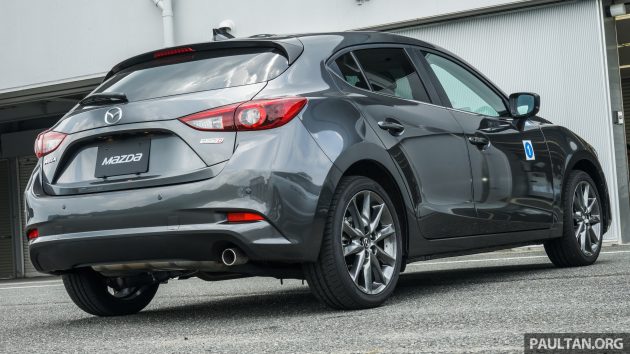



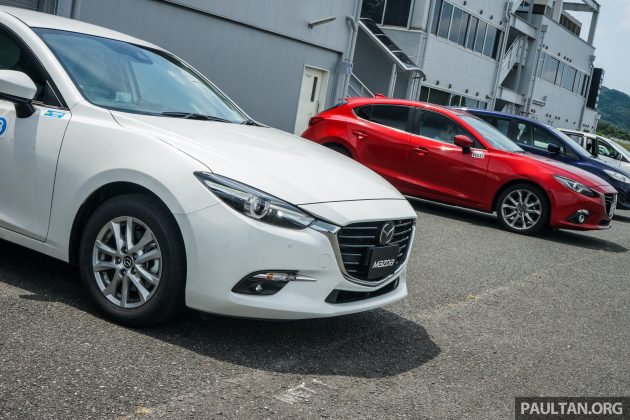

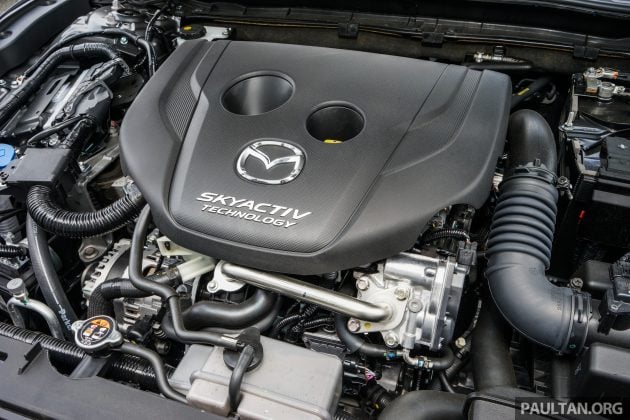
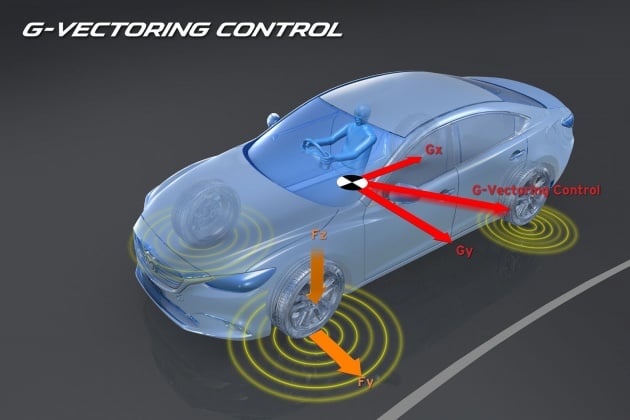
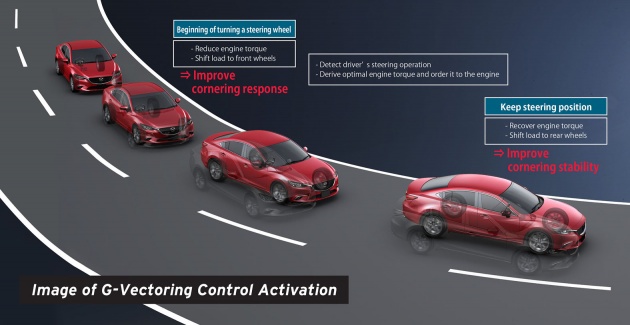



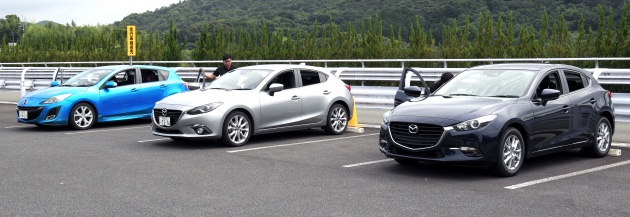
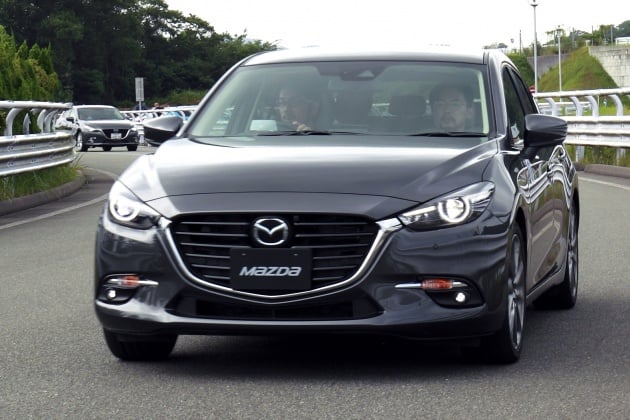
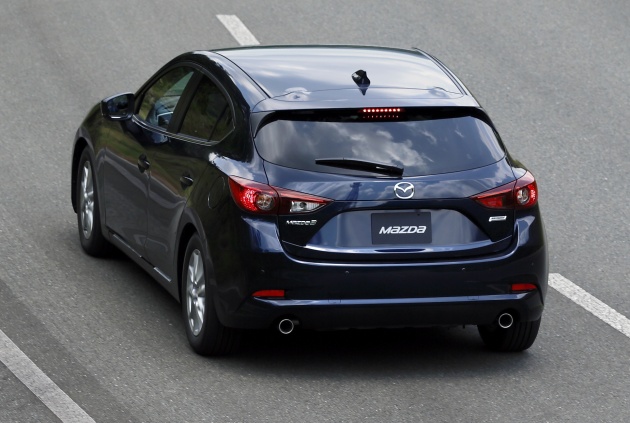
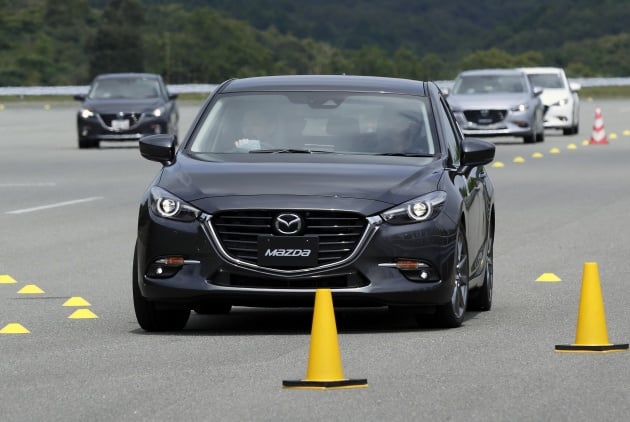
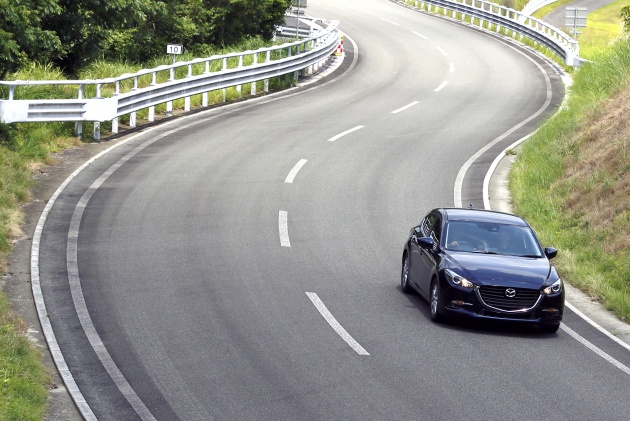














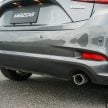
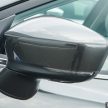
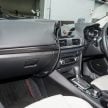
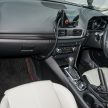
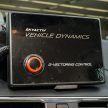
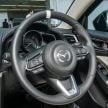
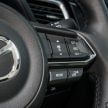
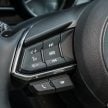
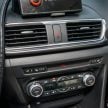
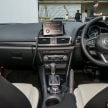

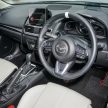



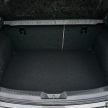
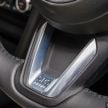

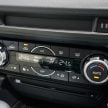




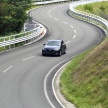

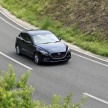

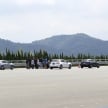


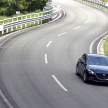
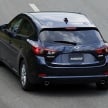
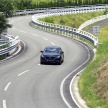


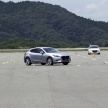
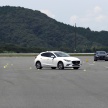
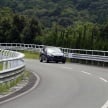



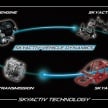
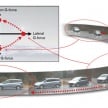
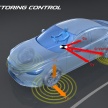
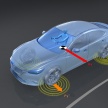
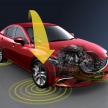
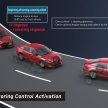
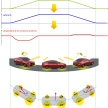
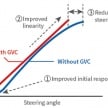
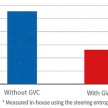
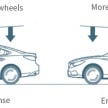
























If only the biodiesel stupidity doesn’t affect euro 5 , I’m throwing my money at the Mazda 6 diesel with this GVC and new natural sound absorber dampening in the diesel piston rings
Anything but clumsy Civic.
Well done Mazda! Ultimately state of art tech at basement prices.
Just imagine only my 2016 Audi R8 recently got those in the whole Audi Porsche Lambo Group.
That grey hatchback looks pretty damn good imo
Isn’t this something the golf and focus had long time ago? Golf had XDS while the Focus had torque vectoring. Essentially both are the same thing but with different name.
Not really. Both Volkswagen’s electronic brake-operated XDS system (separate from the Golf GTI Performance’s mechanical limited-slip differential) and the Ford Focus RS’ mechanical clutch-operated rear torque vectoring system are designed to provide significantly increased traction in the corners.
Mazda’s G-Vectoring Control system, on the other hand, only trims the throttle on corner entry to give the car a better cornering stance. The brakes and differentials are not touched in any way, and the system adds no traction benefit whatsoever (apart from reduced initial understeer caused by shifting the weight forwards under deceleration).
Right.
Almost similar system, Super-Handling All-Wheel Drive™ (SH-AWD) on Honda NSX i tested in UK
Thank you for the explanation. In that case can I say that the XDS and Torque Vectoring in the Golf and Focus is still more superior over the Mazda 3?
It depends. If you’re looking for outright traction, then torque vectoring systems like XDS and the like are better at delivering it than G-Vectoring Control.
However, Mazda’s system is intended to provide benefits in more driving situations, improving high-speed stability and passenger comfort in addition to increasing driver enjoyment.
But the aforementioned systems are more technically advanced, yes.
Expect YOU AIM DABEW to increase price by 5k basic spec, and 8k top spec.
Since when they distribute Mazda in Malaysia?
Since its just a software update, should we expect this in current gen mazda’s?? Should be as easy as uploading the new firmware in the ecu?
And did u hear anything about any MPS version of the 3???
The short answer is no. While G-Vectoring Control is technically a software-only system, it has to be tuned from car to car to get the best benefit out of it, and the suspension and steering setups of each model will likely have to be revised as well – as is the case with the facelifted Mazda 3.
Additionally, aside from the software upgrade, some of the electronic hardware also has to be changed, so it’s not a straight plug-and-play affair.
And no, despite us asking questions about it, we’ve heard not a thing about a 3 MPS. :)
Actually, this is how Takumi would have been driving, when he was forced to drive on a FWD XD
Wall of text. It sounds like they are trying to say most of us are bad drivers and drive over the limit of what the vehicle is capable of.
To be fair, Jonathan did NOT say most of us are bad drivers. It merely refer GVC is useful for normal drivers while expert drivers will not noticed it as GVC does exactly what an expert drivers will do.
They = Jonathan?
Please… Jonathan is just doing his job. I’m referring to Mazda.
Andre, bcos this article is written by Jonathan & it happen to be in PT.org, I will take it as THEY refer to Jonathan & PT.
Am sure Jo is not reporting for the sake of reporting. He went all the way to Mine in Yamaguchi(Japan) to be part of a team testing the cars.
Judging from his diplomatic ways of answering questions pertaining to cars, Jo/PT have a young & dynamic team capable of challenging the establishment.
I don’t have to speak on behalf of Jo/PT, they probably can do much better than me but since U reply to me, it is only a courtesy to reply to you.
Thanks for taking the time to write. Keep posting as I do cherish a Genuine comments compare to some bashing just for the sake of bashing. Shalom & Cheers …
Is there any weird sound coming from underneath the facelifted car? Our ckd mazda3 has this problem
Facelift M3 much better NVH.
Lesser road & tyre noises. 2 Thumbs UP!!
Good news for all AkyActive engine cars. If i read it correctly, the software can be deployed in any SkyActive Vehicle FOC.
Surprise that no one corrected the error in SkyActive.
any clever msian knows, the resale value of this car will drop like a brick when u drove the car from the show room.
to much electronics will make this car depreciate faster.
be clever like me choose toyota, either vios or altis, both are rock solid performer with dual VVTI engine technology.
civic turbo?, do not get near that car, it will overheat anytime anywhere and everywhere.
Unker shud juz get kereta lembu. Zero electronics. Summore lembu resale value sure go Up!!!
So… based on your logic above, you must be still driving a Datsun 120Y? You sound very much like a like a retard called Sam Lor?
If u wan gud RV, just buy Persona2 and invest the difference. RV sure veli ‘keng’!
to me,is a reason for price increase next facelift only. in our country, who care taking better cornering skill?all road are highway except Genting hill road.
Mazda is being canny here..the 8 years that it took to develop this system was probably because it created an entire suit of driving systems and is doing the good old ‘trickle feed’ approach to its way of doing business..
I believe there is a whole lot more to this but Mazda is not showing all of its cards just yet…I expect a more sophisticated version of this system in the upcoming Mazda 6 in a couple of years time…
This is after all, a company that said it will NEVER delve into turbocharging for Skyactiv engines a few years ago and is doing just that in the upcoming Cx-9 while adding exhaust pulse modulation etc to its idea of a lag-free turbo… that did not appear overnight….
They are literally one of the most secretive manufacturers out there
I have the pleasure of spending time in a 3 for a long journey to JB and back. Feels solid, grounded and handles very well. More Conti than Japanese really…overall very impressed esp base model have 6 air bags!
Way better drive and looks than the rivals esp the new Civic that looks like a transformer. Toyota don’t have to say lah…Make it 5 year warranty and you would have a sure winner here.
Look is up to individual. To me, Civic looks better especially the side profile coupe like.. may be design still fresh. M3 already few years on the road. Yes M3 drive better but Civic more practical and comfortable. Both are good choice if looking for C Segment car.
How is the highway noise during your trip?
What about the camera next to the front logo? What is it for?
Pity Toyota salesmen. When their cars doesn’t have any advantages over other brands’ cars, they can only spew bullshit about RV. Used Toyotas are not so sought after anymore like in the past, thus their resale value also suffered.
Where is the ‘Sedan’